Are your tomato plants struggling a bit and in need of a little growing help? Do they seem weak, lethargic – or just plain sad sitting in the soil?
In many locations, this has been a tough early growing year for gardens and gardeners. Especially for those who love to grow tomatoes.
Many areas have been inundated with heavy rain, flooding and cooler temperatures. All the while, other regions have had to deal with excessive heat and drought. But if your crop happens to be lagging behind a bit due to the crazy conditions – don’t give up hope just yet.

For starters, there are still plenty of growing days left in the season to get that crop turned around. And, as July & August arrive with the weather tomatoes love most, with just two simple tips, you can power your crop up – and have your tomato plants growing like wild before you know it!
2 Simple Secrets To Help Struggling Tomato Plants
The fastest way to revive a struggling tomato plant is to provide it with a supercharged boost of nutrients. One that can be applied several times over the course of a short two to three week period to get your plants to revive and thrive.
When young plants have been inundated with too much or too little rain, or excessively cold or hot weather, they have trouble absorbing nutrients from the soil. Especially when they are young and most vulnerable.
But by supplementing your plants with a powerful dose of nutrients, you can almost always kick-start their growth in lightning-fast fashion. And in the process, set the stage for an incredible mid and late season tomato harvest.
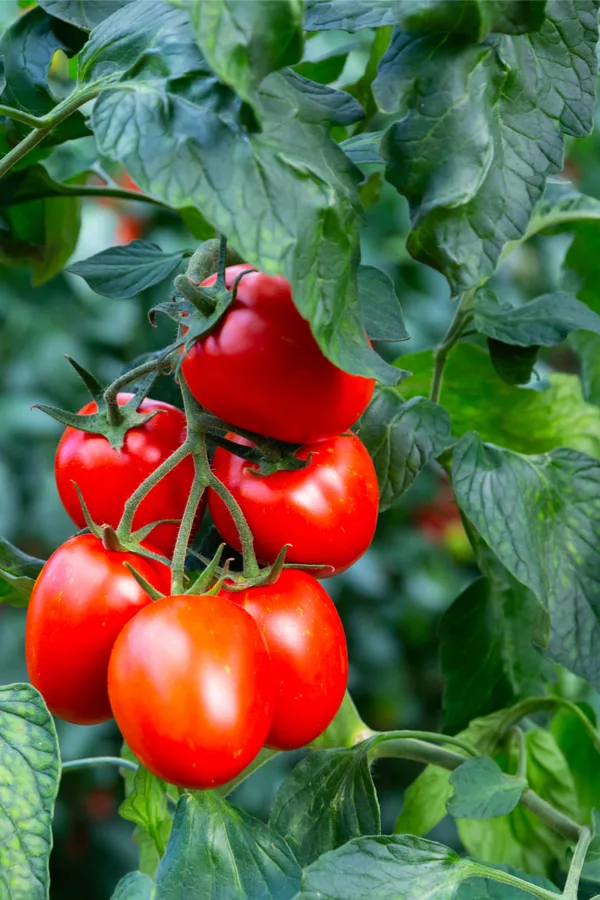
But before you supply that power, you need to make sure your plants have a few extra things in place that can help them make the most use of those nutrients. And it all starts with making sure your plants are mulched correctly for success!
#1 Mulching Your Plants For Success – How To Help Struggling Tomato Plants
Mulching your plants is by far one of the most important keys to growing healthy, strong and productive tomatoes. And if you have not mulched them yet, you definitely need to do so now.
Mulch not only prevents competing weeds from taking hold, but also provides a slew of additional benefits. It helps to keep moisture in the root zone, and insulates the soil from hot or cold temperatures.
In addition, it can help to keep soil borne disease from splashing up from the soil below. But how and what you use to mulch can make a big difference in your plant’s success.
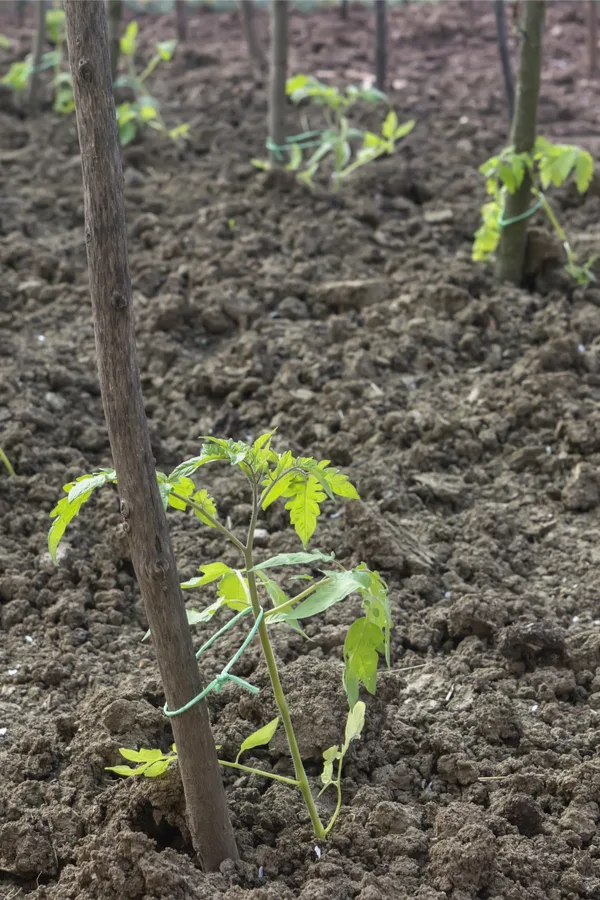
But mulch is not just about protection. In fact, when applied correctly, it can be part of the powering up solution to turn your crop around.
How To Help Power Up Struggling Tomato Plants With The Right Mulch
Straw, shredded leaves and grass clippings are all excellent choices for mulching your tomato plants. A thick 4 to 6 inch layer of these organic materials can certainly do the trick.
But before you apply that layer, you can really revive plants with an even more powerful mulch underneath from one of the best organic materials around – compost!
Begin by placing a few shovel-fulls of compost around the main stem of each tomato plant. Want to make it even more powerful? Add in a cup of worm castings to the compost as well.
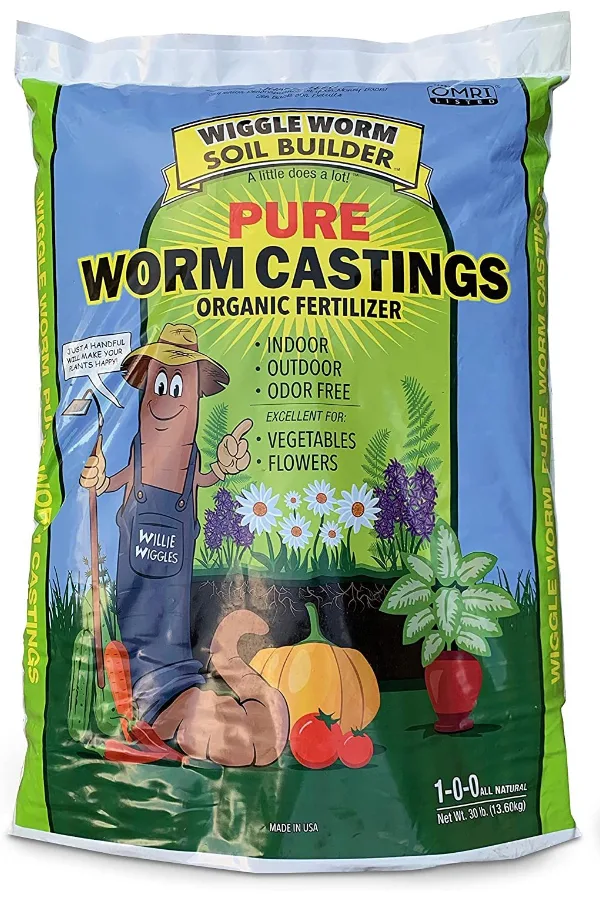
Compost is the ultimate slow release fertilizer. It is filled with the nutrients tomatoes love most. The same can be said for worm castings. And when the two are combined to mulch around the base of a plant, great things happen! (See : Worm Castings – The Biggest Secret To Great Vegetables & Flowers)
The heavy mulching/side dressing of nutrient-filled compost and castings helps to insulate the plant’s roots from the hot summer sun. But more importantly, it will soak additional nutrients into the root zone every time you water or it rains.
Double Mulching – How To Help Struggling Tomato Plants
When complete, you should have about a 2″ thick mulch ring about 6 to 8″ in diameter around each plant. This layer is in contact with the soil. Over top of this layer, then apply your regular four to 6 inch layer of straw, leaf or grass mulch on top – and your plants will be ready for business!
If you have already mulched your plants – you can still add the power-packed compost and castings mulch. Just pull back, apply, and then reapply the top mulch.
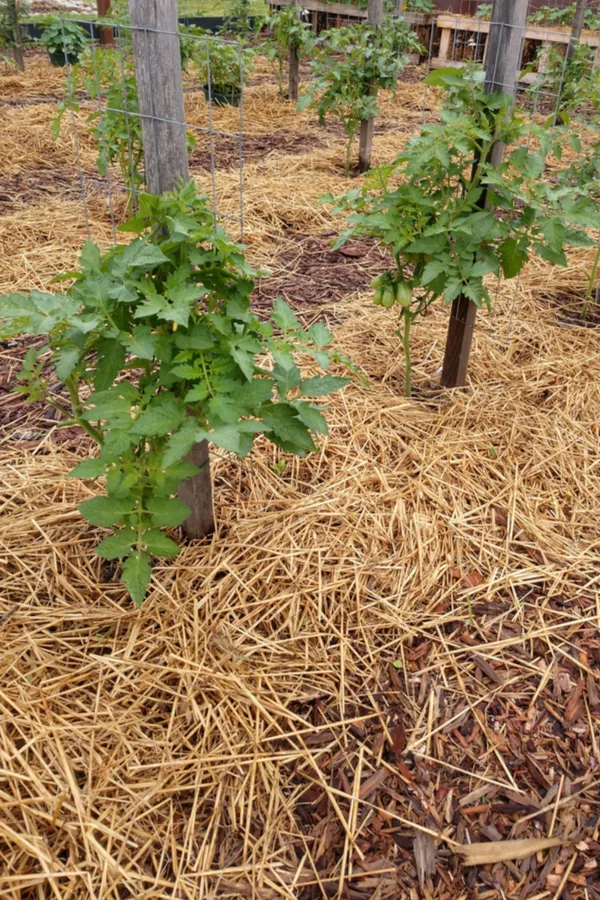
One last helpful bit of advice is that if you haven’t already, now is the time to prune the bottom of your tomato plants. Not only will it help make this mulching process easier, it will help your plant’s overall health and vitality as well.
Now it’s time to hit your plants with a powerful, energy filled punch of power! And the best way to do that is by using an all-natural liquid fertilizer.
Powering With Liquid Fertilizer – How To Help Struggling Tomato Plants
Liquid fertilizers are the fastest acting of all fertilizers. And for plants that are lacking nutrients, the quicker you can get them to absorb the power, the faster your plants will recover.
They provide nutrients to plants in two quick and powerful ways: One, via the plant’s root system as the liquid fertilizer leaches into the soil. And two, through a process known as foliar absorption. Foliar absorption is when a plant absorbs nutrients directly through its leaves.
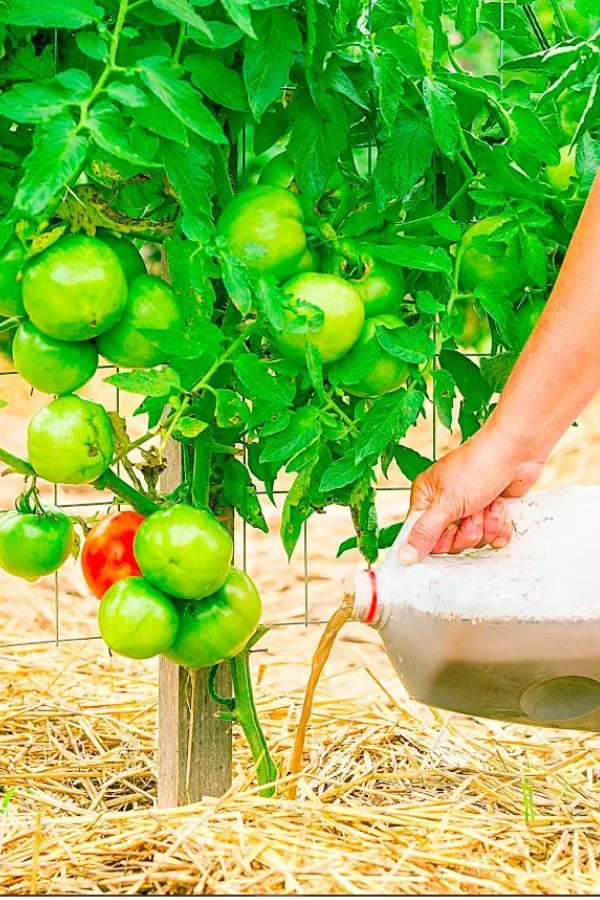
There are some very good all-natural organic fertilizers on the market that are perfect for creating homemade liquid fertilizers.
Our new favorite for this is Burpee Organic Tomato and Vegetable Water Soluble Plant Food 6-2-3. It can simply be mixed with water and poured onto plants from a watering can or jug.
Creating Your Own Fertilizer From Compost – How To Help Struggling Tomato Plants
You can also create your own powerful liquid fertilizer from either fresh compost (compost tea), worm castings, or a combination of both.
Compost tea is one of our favorite go-to liquid fertilizers. It is powerful, fast acting, and most importantly, contains all of the nutrients tomatoes love. Add in the worm castings, and it becomes even better!
To make, place fresh compost in a 5 gallon bucket about 2/3 of the way from the top. Add in two cups of worm castings to the mix and then fill the bucket with water.
Check Out Our Podcast On How To Make Incredible Compost Tea To Power Plants!
Stir the mixture a few times each day over the course of a few days. Then simply strain and use. You can discard the remnants right back into your compost pile.
With either liquid, use at a rate of about one-quarter to one-half gallon per plant. Be sure to pour the liquid both over the foliage, and the around the root zones. See : How To Make 4 Great Organic Liquid Fertilizers
Applying Fertilizer
For a 14 to 21 day period, apply the liquid fertilizer every 3 or 4 days for a total of 5 applications. Be sure to apply early in the morning, or later in the evening to prevent any scalding of the leaves from the sun hitting the liquid.
It is amazing how in just a few weeks, your plants can suddenly begin to turn the corner. Here is to turning your struggling tomato plants around with a little TLC. And if your peppers or other vegetable plants might be struggling as well – you can give them the same treatment to turn them around.
Happy Gardening – Jim and Mary
Jim and Mary Competti have been writing gardening, DIY and recipe articles and books for over 15 years from their 46 acre Ohio farm. The two are frequent speakers on all things gardening and love to travel in their spare time.
As always, feel free to email us at thefarm@owgarden.com with comments, questions, or to simply say hello! You can sign up for our free email list in the subscribe now box in the middle of this article. Follow us on Facebook here : OWG Facebook. This article may contain affiliate links.
